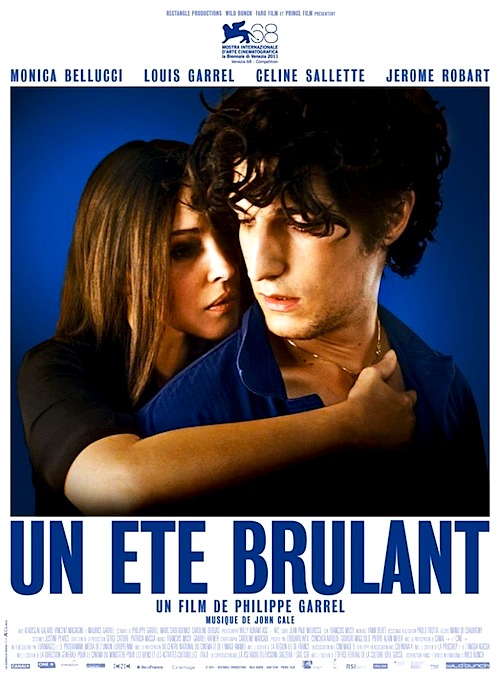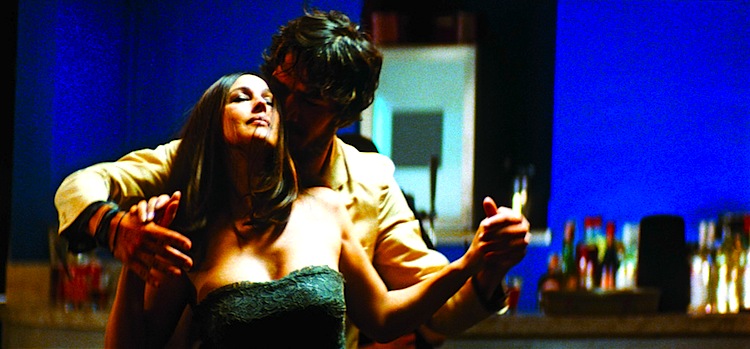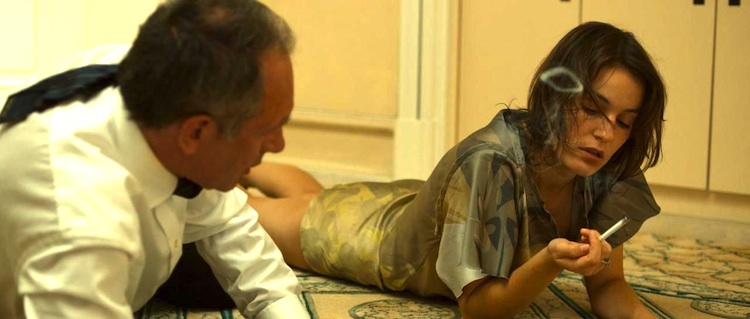
By Joe Bendel. It is almost like a modern-contemporary version of Metropolis. The financial titans rule the Frankfurt financial world high atop their glass and steel towers, while everyone else scurries about like ants on the sidewalk. However, very real dangers accompany their power games in Christoph Hochhäusler’s The City Below (trailer here), which screens during the Museum of the Moving Image’s inaugural First Look film series that has leapfrogged other festivals to kick-off 2012 for cineastes in earnest.
Roland Cordes is about to become the banker of the year and broker a blockbuster merger for his firm, because he is one of Tom Wolfe’s Masters of the Universe, who always gets what he wants. Then he meets Svenja Steve, the wife of a junior colleague. Finally, someone is willing to say “no” to Cordes, or at least “probably not.” While she refuses to immediately fall into bed with the banker, she does not exactly discourage his attention. In fact, she seems to enjoy sparring with the older man, at least on days when she is in the right frame of mind.
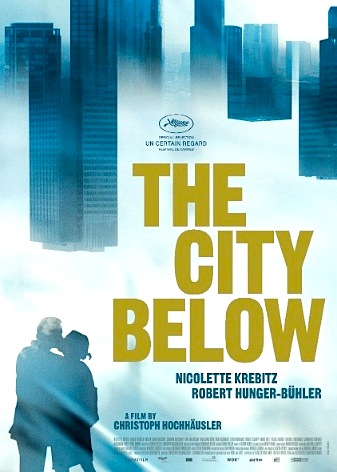 Meanwhile, the stakes are rising at Cordes’ Lobau Bank. The board is keeping the assassination of the head of their Indonesian office hush-hush. However, it leaves an opening for Cordes to move the ambitious Olli Steve up and out of the picture, despite the presence of more qualified candidates. Shrewdly he keeps his fingerprints off the decision, but there are still signs he might be losing his Midas touch.
Meanwhile, the stakes are rising at Cordes’ Lobau Bank. The board is keeping the assassination of the head of their Indonesian office hush-hush. However, it leaves an opening for Cordes to move the ambitious Olli Steve up and out of the picture, despite the presence of more qualified candidates. Shrewdly he keeps his fingerprints off the decision, but there are still signs he might be losing his Midas touch.
Below is not a film for uninformed Occupy-This simpletons. Essentially, it is a cerebral character study with overtones of a Paul Erdman financial thriller that takes a slightly weird turn into Lars von Trier territory at the eleventh hour. The net effect is quite distinctive, if hard to categorize.
Part Shakespearean tragic hero and part moustache twisting financial villain (sans the facial hair), Robert Hunger-Bühler creates one of the most fascinating and confounding characters to ever stride through a cinematic boardroom. It is an open question whether there is a soul buried deep within him, but there is certainly a multiplicity of layers to peel back in search of it. Nicolette Krebitz matches him note for note as the seemingly fickle, but more complicated than we initial realize Svenja Steve. Watching their verbal fencing is a pleasure.
Cinematographer Bernhard Keller’s austere color palate and use of glassy, reflective surfaces creates a cold, eerie vibe that nicely enhances Hochhäusler’s sense of mounting dread. While hinting at much, he refrains from answering many questions. Indeed, this film is chocked full of odd little bafflements, yet everything seems to follow according to some strange logic. Smart and ambiguous in an intriguing (rather than smugly self-satisfied) way, Below is one of the highlights of the first First Look, screening once-and-only-once this Sunday (1/15) at the Museum of the Moving Image in Astoria, Queens.
Posted on January 12th, 2012 at 9:40am.


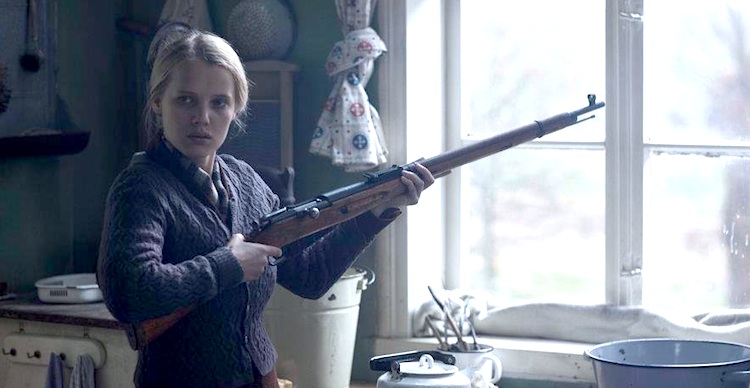
 Grant me an old man’s frenzy,
Grant me an old man’s frenzy,

